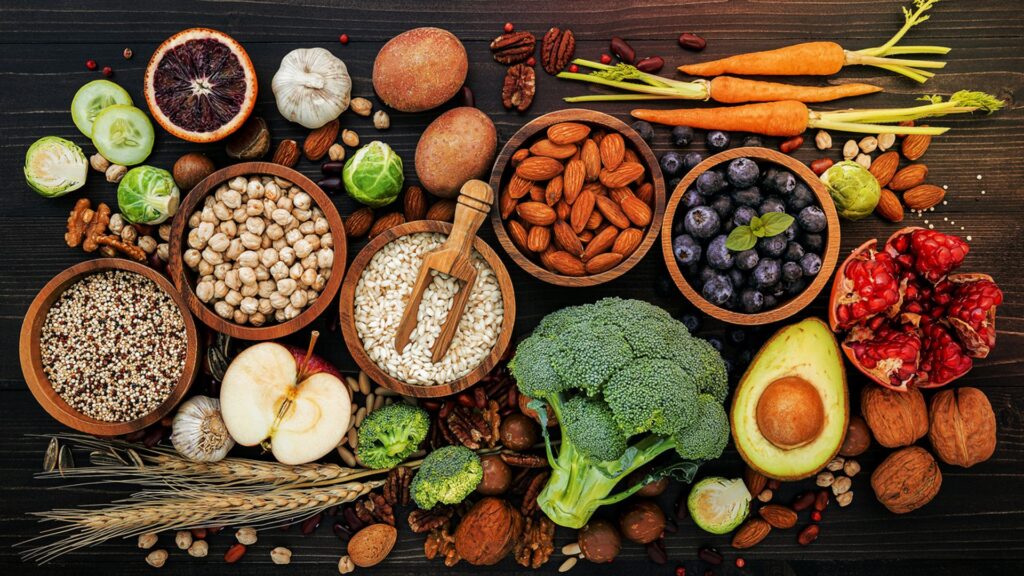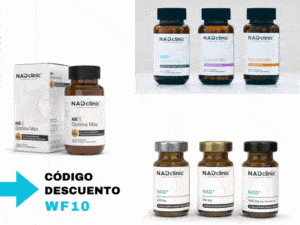In the plant world, the anti-nutrients are natural compounds that plants use as a defence mechanism against pests and predators. However, in our organism, they can interfere with the absorption of vitamins and minerals.
Far from always being negative, some anti-nutrients also exert protective health effects, especially when consumed in moderate amounts. In fact, many are part of the phytonutrientsThe use of these products has a preventive effect on obesity, diabetes, hypertension, cardiovascular diseases, certain types of cancer, osteoporosis and inflammatory processes.
The challenge is not to eliminate them completely, but rather to learn how to consume them in a way that their benefits outweigh their possible adverse effects.
What you need to know about anti-nutrients
- They do not block completely nutrient absorption. For them to pose a real risk, large amounts would have to be ingested continuously.
- Concentration and timing matter. For example, low levels of phytic acid, lectins or phenolic compounds can improve glycaemic control and lower cholesterol and triglycerides.
- The distance between shots also has an influence. The polyphenols in tea or coffee, although they may decrease iron absorption, are beneficial antioxidants. Simply take them separately from main meals to avoid interference.
Top 10 most common anti-nutrients
- Phytate (phytic acid)
Found in seeds, grains, nuts and legumes. It reduces the absorption of zinc, iron, magnesium, magnesium, copper, phosphorus and calcium, and may inhibit digestive enzymes. In its favour, it improves glucose response and protects against certain diseases. - Tannins (tannic acid)
Polyphenols that hinder protein digestion and iron absorption. They are abundant in grapes, green tea and other bitter-tasting plants. On the positive side, they are powerful antioxidants and cardiovascular protectors. - Lectins
Glycoproteins found in legumes, cereals and some seeds. In excess, they can alter the microbiota and hinder the absorption of nutrients. In sensitive individuals, they cause digestive discomfort and even promote inflammation. - Gluten
A mixture of proteins (gliadin and glutenin) in wheat, barley and rye. It is harmful for people with coeliac disease and may aggravate some autoimmune diseases. Gliadin increases intestinal permeability and may promote inflammatory responses. - Protease inhibitors
Present in seeds, grains and legumes. They block digestive enzymes needed to break down proteins, making them difficult to digest. - Calcium oxalate
Abundant in spinach and other vegetables. It decreases the absorption of calcium, iron and magnesium, and can form kidney stones. - Saponins
Compounds from legumes such as chickpeas and soya beans. In excess, they irritate the gut and affect the immune system. Some have haemolytic activity (damage to red blood cells). - Goitrogens
Reduce iodine uptake by the thyroid, found in broccoli, millet and peanuts. - Genistein
Soy isoflavone that interferes with the production of thyroid hormones. - Glucosinolates
Compounds with a protective effect against cancer, but also considered anti-nutrients due to their action on thyroid function.

How to reduce anti-nutrients and reap their benefits
- Soaking
Leaving legumes and seeds in water helps to remove soluble compounds.- 12 hours of soaking reduces phytates by 9%.
- 6 to 18 hours can decrease lectins up to 50% and tannins up to 25%.
- Fermentation
An ancient technique that reduces phytates and enhances nutritional value, as in sourdough bread or tempeh. - Germination
Increases the bioavailability of iron, phosphorus and zinc. It is recommended to germinate for at least 4 days. - Extra vitamin C
Promotes mineral absorption, even in the presence of anti-nutrients. - Targeted supplementation
In cases of deficiency, the health professional may prescribe iron, zinc, calcium or magnesium.

Do you have to worry about them?
In a balanced and varied diet, anti-nutrients do not represent a risk for most people and can be beneficial. Precautions are recommended in particular in cases of autoimmune diseases o specific nutritional deficitsplanning the feeding to optimise absorption
In people with rheumatoid arthritis, psoriasis, lupus or vitiligo, reducing certain anti-nutrients such as lectins can reduce gut inflammation and improve symptoms. This is due to the molecular mimicryA phenomenon whereby the immune system mistakes food proteins for the body's own proteins, triggering autoimmune reactions.
Any such changes must be made with professional nutritional monitoring to avoid deficiencies and maintain a complete diet.






